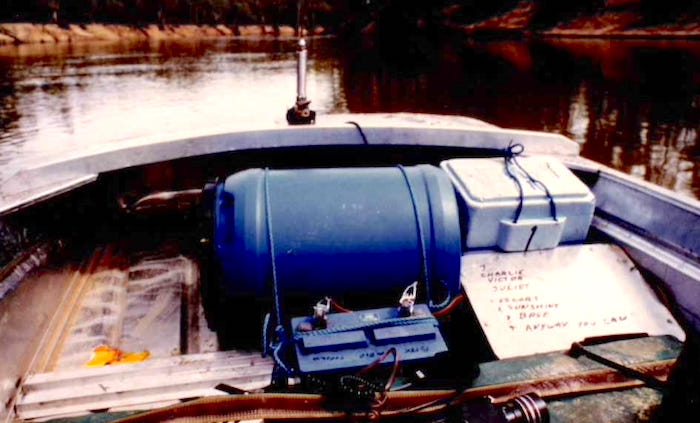HAVING found that CB radios were unsuitable the search was on to provide the expedition with reliable communications. VHF (very high frequency) radios were selected as the required units however, as their cost was prohibitive and sponsors could not be found, they were initially rejected. Harvey Webster made contact with the West Coast Car Club Communications Team who agreed to loan six VHF radios to the group.
Licences initially proved to be a problem as the approval of each state in which the radios would be used was required. Finally Mr Kelvin Hales of the Victorian Department of Communications had the initiative to co-ordinate the three states involved (Victoria, New South Wales and South Australia) and the necessary licences were issued.
The expedition then had the good fortune to have Tony Poole of the West Coast Car Club Communications Team join their ranks. Tony’s expertise in all matters concerning communications proved to be invaluable.
VHF radios were fitted in each of the support vehicles. Sunshine caused a special problem as it had a 6 volt electrical system and the radios required 12 volt power.
Meanwhile investigations had been underway to ascertain if the radios to be installed in the boats could be powered from the motors. The problems encountered proved to be too difficult to overcome and so a 12 volt car battery was secured in the Nav Boat to provide power for the radio. This had to be removed each night for recharging.
The radio in the Nav Boat was sealed in a padded, waterproof aluminium box and secured in the bow. Communications were less than satisfactory on the first and second day of the expedition as the navigation boat was fitted with a remote speaker only. This meant that the radio operator had to place his ear very close to the speaker to be able to hear over the noise of the motor. Consequently communications were virtually ‘one way only’ – boat to support crew.
Tony Poole modified the system using an earpiece from a motorbike CB radio that allowed the operator two way communications at all times.
From this time the communication network operated effectively. In fact, on occasions the Nav Boat relayed messages for the support crew when they were out of range of each other.
Range was good and the only problems encountered were caused by the high cliffs in the lower reaches.
The net was established under the callsign 3CVJ and the stations were identified as follows:
‘Nav Boat’ – Navigation Boat
‘Escort’ – Toyota 4 wheel drive
‘Sunshine’ – Sunshine
‘Base’ – Ford Truck
Heliographs were used when crossing Lake Alexandrina and when on high cliffs.
A system of red and green flags was used went entering locks. An air horn was to be used to attract the attention of each boat but this proved to be ineffective.
The use of VHF radios guaranteed communications and greatly simplified logistics. The record could not have been broken and no future expedition will break the Murray River Expedition’s record without an efficient communications network.
The radio can be seen on the starboard side of the boat. It has the network callsign listed on its waterproof cover. The remote speaker is under the webbing strap. The aerial was mounted on the foredeck for best results. The blue drum was used to store maps, cameras, film and pens.
© Kim Epton 1981-2022
601 words, one photograph, one image
Photographs by David Whitney, Tony Poole, Vic Watt, Roly Ritson
Feel free to use any part of this document but please do the right thing and give attribution. It will enhance the SEO of your website/blog, and Adventures.
See Terms of Use


